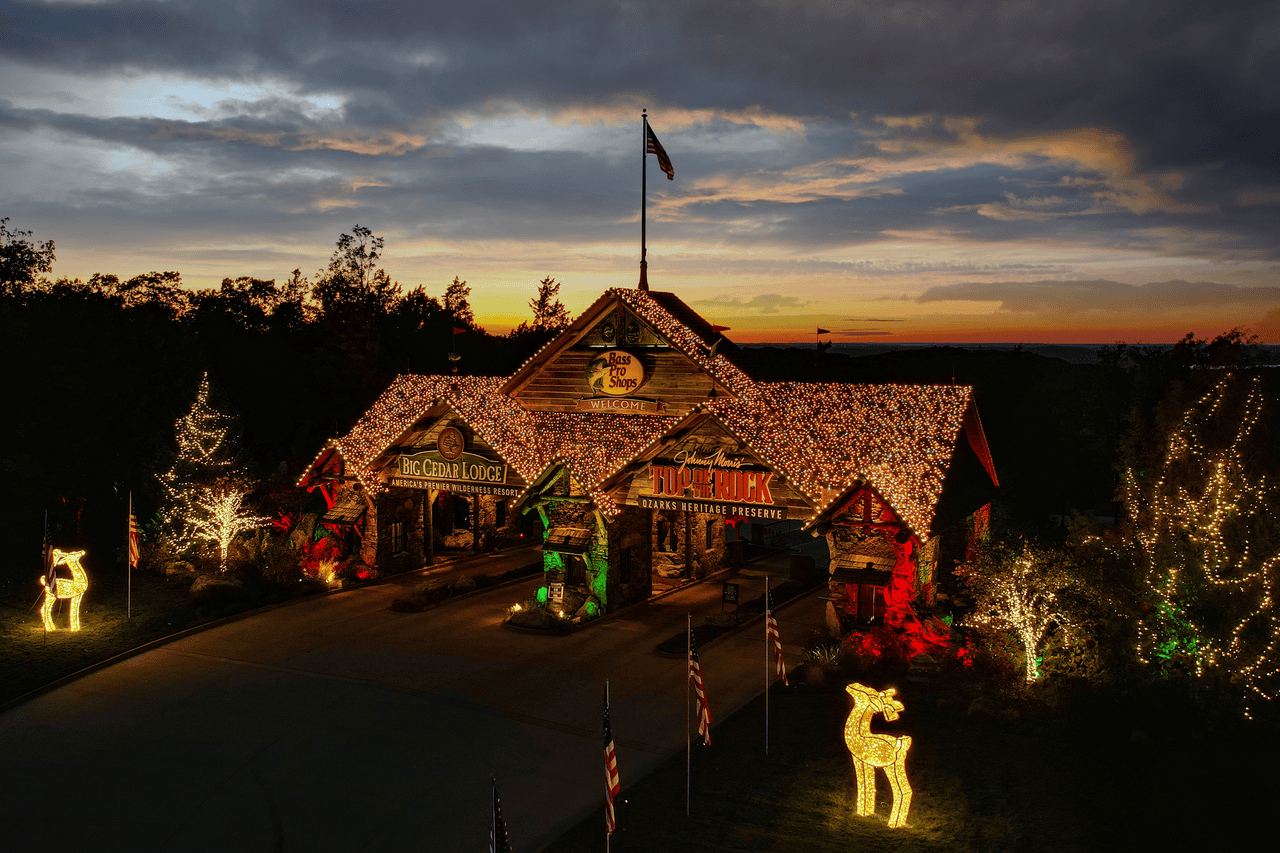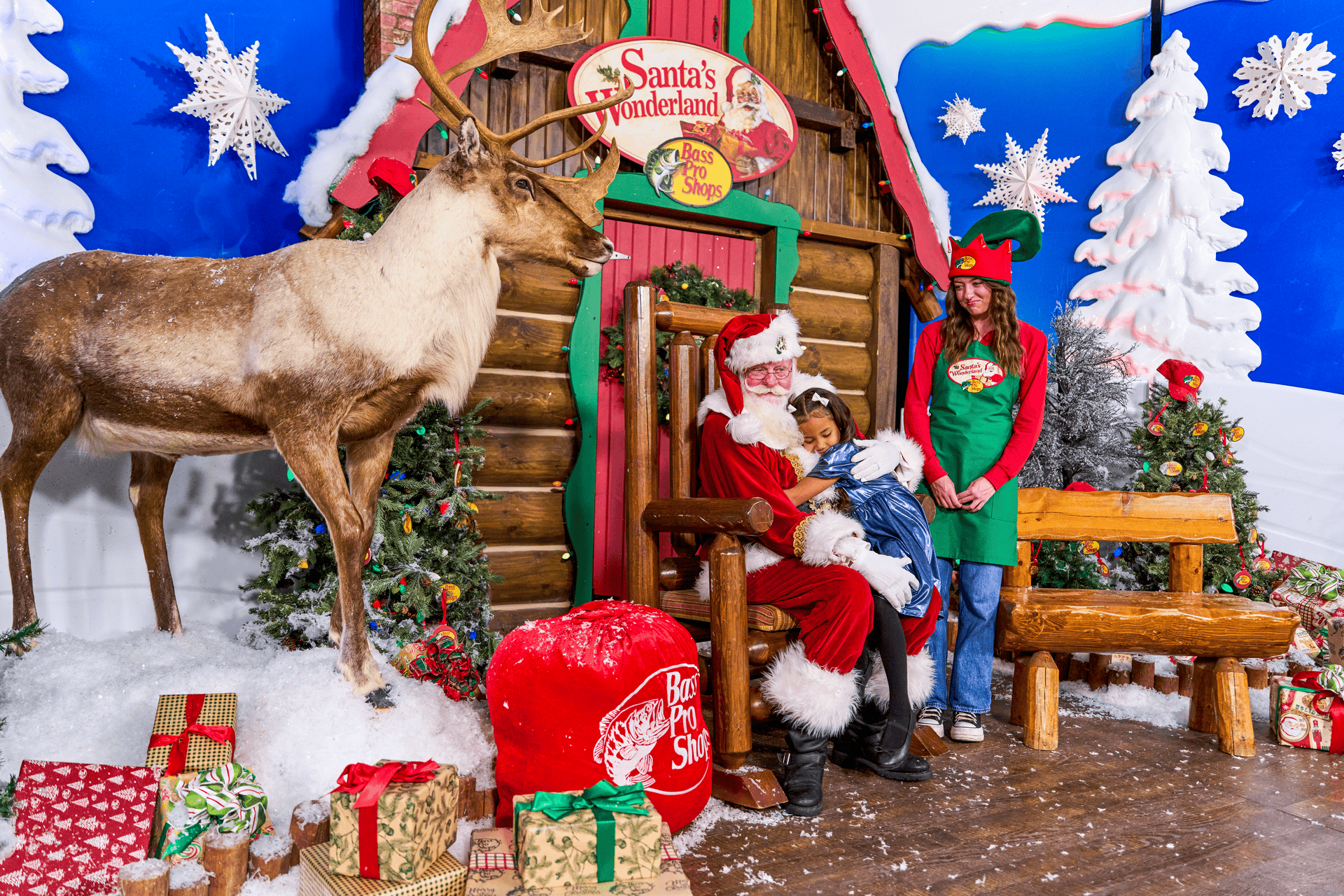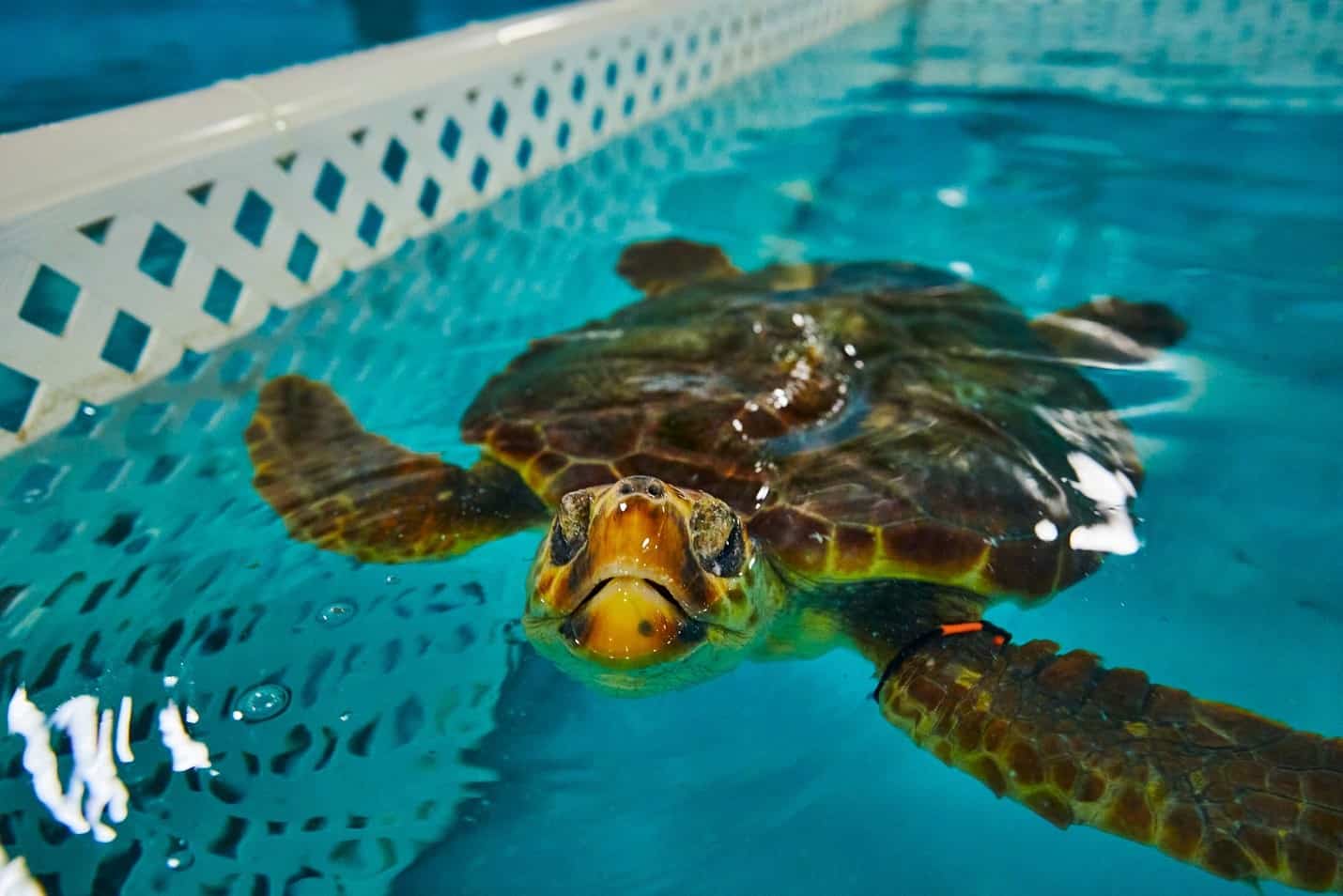
Rehabilitated sea turtles prepare to return to the wild
Twelve loggerhead sea turtles found a life-saving home at Wonders of Wildlife’s new Sea Turtle Center, the first rehabilitation center of its kind in the Midwest
A dozen loggerhead sea turtles are preparing to leave their temporary home at Johnny Morris’ Wonders of Wildlife National Museum and Aquarium (WOW), after a life-saving rehabilitation experience that has left a lasting impression on everyone involved.
When they arrived in December, part of a whirlwind preparation process after being victims of the annual rite of cold-stunning at their home on Cape Cod, their lives were hanging in the balance.
Some 14 weeks later, they are healthy, happy and ready to return to the wild, thanks to the tireless work of a team of WOW aquarists and care specialists.
“It’s such a big deal for us as a staff and a facility to bring this on,” said Holly, a veteran aquarist who has spent much of her career working with sea turtles. “It’s been a great experience for everyone here and it’s amazing to be a part of something like this and feel like you’re contributing to conservation first-hand.”

A happy ending
When they arrived from Cape Cod, they were sluggish, one was injured and four were suffering from pneumonia.
Cold-stunning is a hypothermic reaction experienced when marine reptiles are exposed to cold waters for prolonged periods, causing them to be weak and inactive, unable to forage for food or defend themselves against predators.
But this story has a happy ending, another chapter in Johnny Morris’ lifelong commitment to wildlife conservation, facilitated by a passionate team at Bass Pro Shops and Cabela’s, the Johnny Morris Foundation and Wonders of Wildlife.
These sea turtles have been recovering since their arrival in late December, undergoing rehabilitation and constant care at WOW’s new Sea Turtle Center. It took antibiotics to help clear up the pneumonia, get them eating well again and back to full strength.
“Now they are fully healthy and ready to be released as soon as we can work it all out,” Holly said. “They started out slow, and built their body temperature back up over a few weeks thanks to their routine of rest and rehabilitation.”
It took a significant investment of time and energy, with blood work, X-rays and MRIs, and around-the-clock care from the entire team.
Holly helped chart their progress every step of the way, including monitoring every bite of food they take during their feedings three times per day. They dine on a regular diet of shrimp, squid, crab, mackerel, herring and capelin.
It all happens in a 16,000-gallon recovery pool behind the scenes from guests, which speaks to the conservation mission of the Johnny Morris Foundation and Wonders of Wildlife. It’s purely about conservation and care, helping wildlife when there were no other options.
“We’re practicing what we preach when it comes to that conservation effort,” said Mike Daniel, General Curator at WOW. “This was a cool instance, because none of these animals were ever going to stay here. These were animals that needed help to get back to the wild.
“When we started having that conversation and making that plan, that was the one thing that everyone said: ‘This is good stuff, let’s help these turtles.’ It was awesome.”
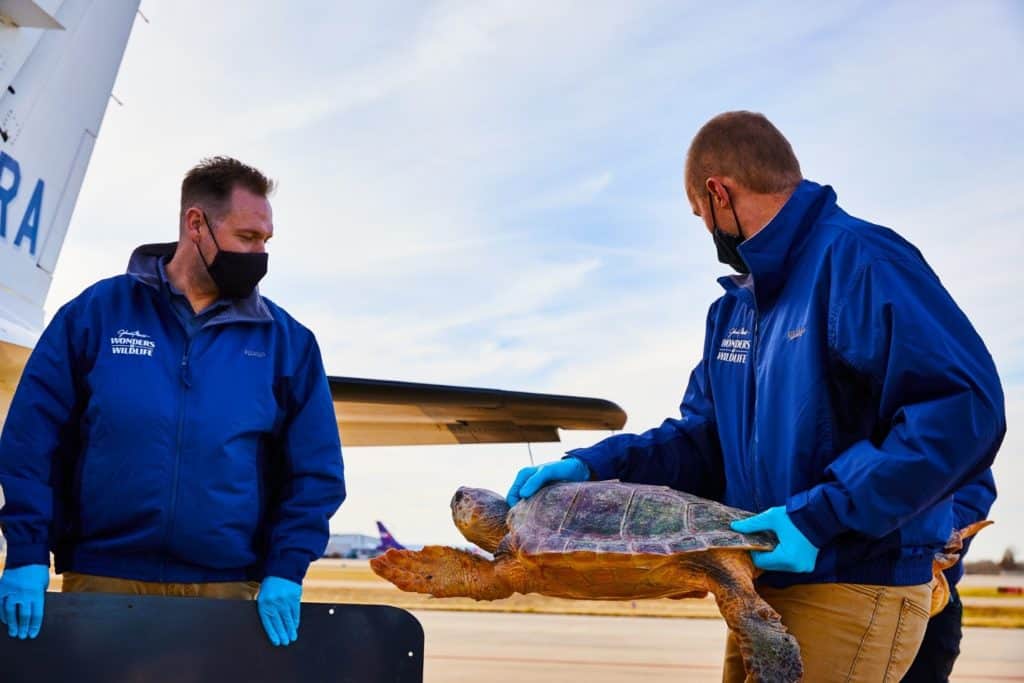
Quick response to a crisis situation
Cold-stunning happens annually, endangering thousands of sea turtles on the East Coast and in the Gulf Coast of the U.S. This year was the largest cold-stunning event on record.
With sea turtle rehabilitation centers along the Eastern Seaboard at full capacity, these 12 sea turtles had nowhere else to go, making it a true rescue situation.
A partnership between the National Marine Fisheries Service, a division of the National Oceanic and Atmospheric Administration, the U.S. Fish and Wildlife Service and the Johnny Morris Foundation resulted in the creation of the Sea Turtle Center at Wonders of Wildlife, with more than a dozen animal care experts, veterinarians and animal care experts standing by.
Facilities must meet strict requirements put in place to rehabilitate sea turtles. Officials closely review the infrastructure of life-support systems and vet the experience of the animal care team.
Thanks in part to a grant from the Bass Pro Shops and Cabela’s Outdoor Fund, Wonders of Wildlife was able to secure funding for the Sea Turtle Center.
A five-hour plane ride from Boston, on a private aircraft provided by the nonprofit organization Turtles Fly Too, brought them to the Ozarks, and the Midwest’s first and only sea turtle rescue, rehabilitation and release center.
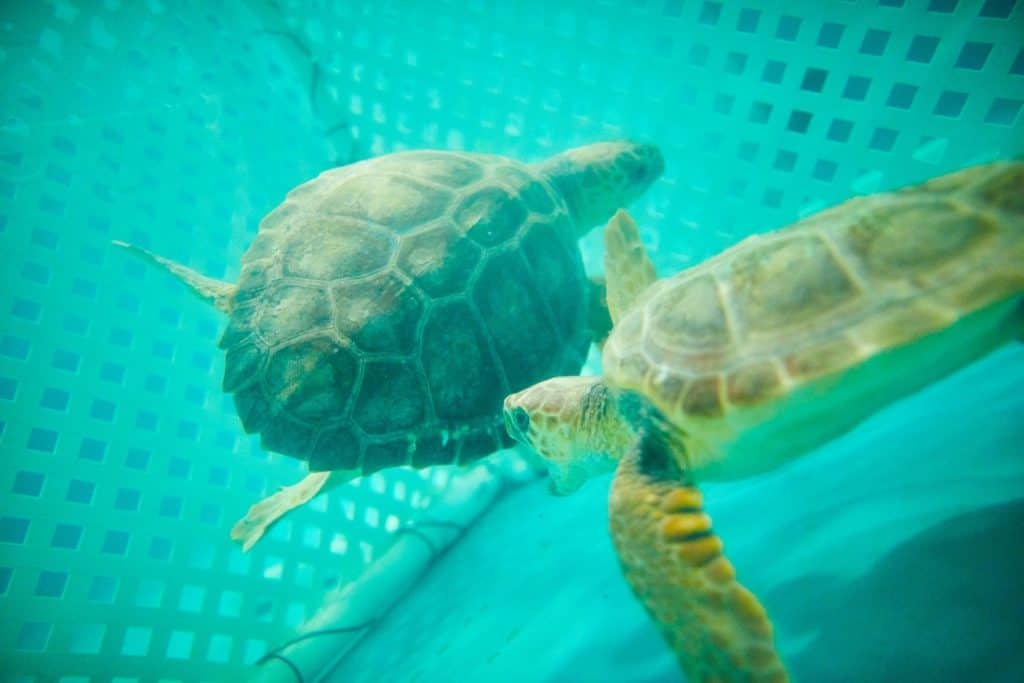
Specific names, specific personalities
Arriving just before Christmas, they were given mostly reindeer names – Dasher, Vixen, Comet, Olive, Dancer, Blitzen, Donner, Rudolph, Prancer, Clarice, Cupid and Chet. Some of them were matched to their behavior: Vixen is the worst biter, Comet is one of the fastest swimmers and Prancer is a troublemaker, for example.
It didn’t take long for them to capture the hearts of their caretakers. It’s clear these sea turtles have distinctive personalities that keep their handlers on their toes.
“We have some turtles in here who are more active, and kind of like to go poke around more and are curious,” said Ben, one of the care specialists who participated in the pickup at the airport. “Some of them just like to hang out a little more. They all are marked with different tags, but you can pick out which turtle is which just from their personality, and their quirks.”
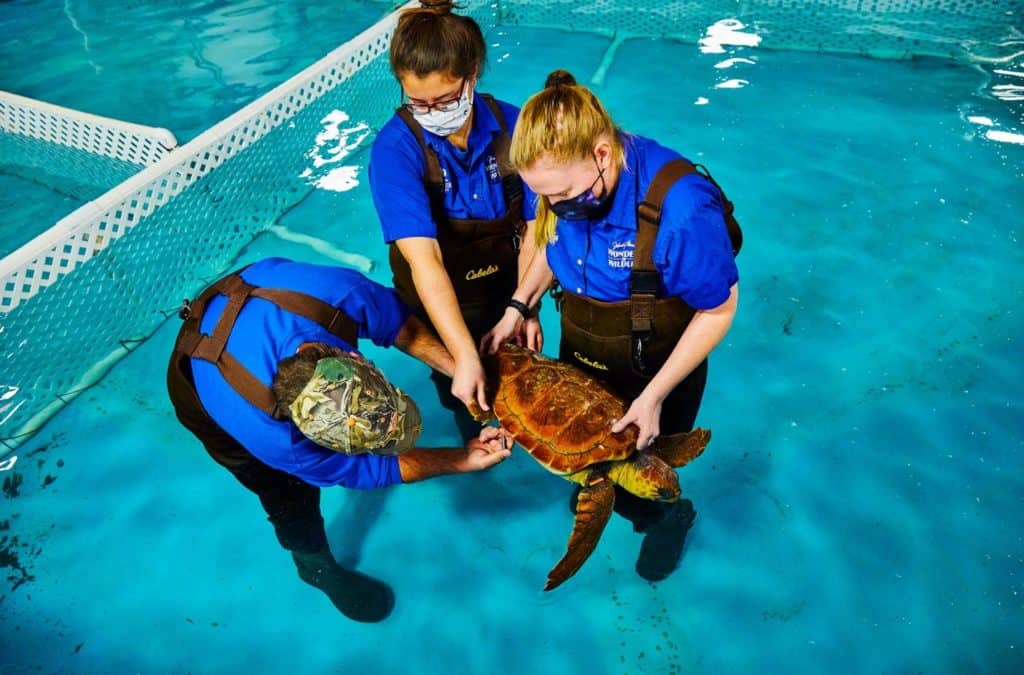
Whenever this rehab stint ends, it figures to elicit some emotional responses from the care team that has gotten to know them so well.
“I think we’re all going to miss them,” Holly said, “but knowing that they are going back to where they need to be is going to be exciting. It’s like that full circle thing, and something that we can proud to have been a part of. I’m definitely excited to see them be released.”
Jacob, another of the animal-care specialists, agreed: “It really does hit home, because it makes us feel like we’re making a difference with the turtle population. The fact that this happens every year, and we are able to step up and help make a difference, is such a rewarding feeling.”
The loveable nature of the sea turtle population only adds to that feeling.
“They are an animal that inspires a lot of interest and excitement,” Mike said. “It’s an animal that is easy to form a bond with – a lot of animals don’t look back at you, but turtles are one of those that do, and that grabs people. There’s absolutely a bond, and an attachment and a commitment to these animals.”
One part of this experience that has been front-of-mind for the care team is to not let the sea turtles get too attached. When they get back into the wild – wherever that may be – it could turn into a dangerous situation to have them get too comfortable when seeing humans, and approach them for food.
“We had to really walk the line, of giving them that care, document that care, and fight that urge to get closer,” Mike said. “We had to keep them wild.”
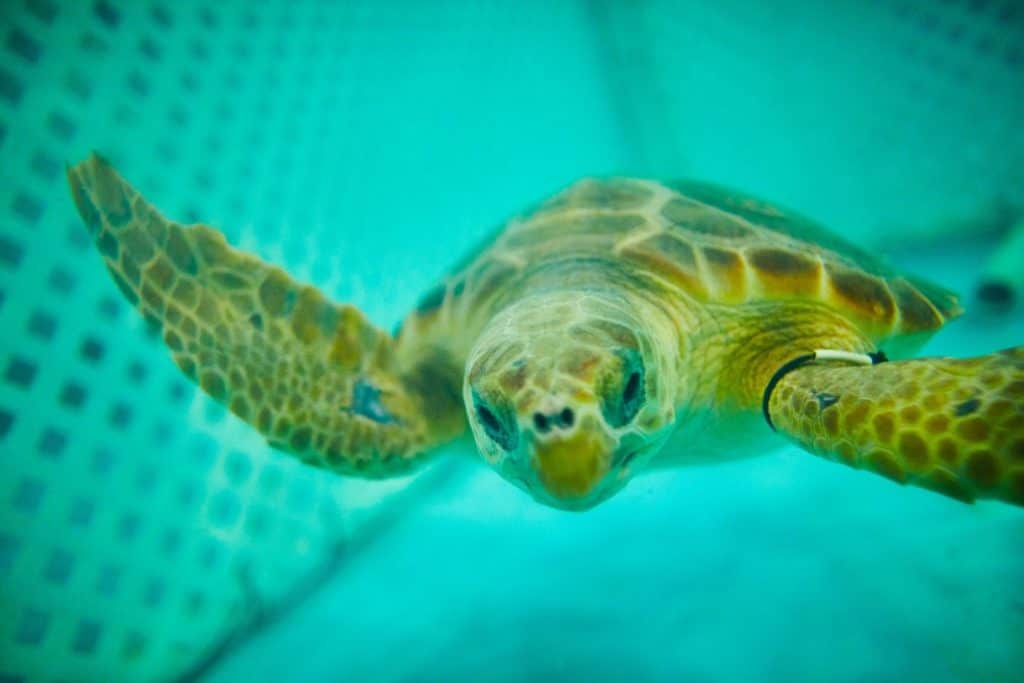
A bittersweet ending
Mike admitted he will have mixed emotions when these creatures get their tickets out of the Ozarks and return to the wild.
“It’s going to very exciting, and a little bittersweet, because we’ve loved having them here,” Mike said, “but myself, my team, Wonders of Wildlife and Bass Pro Shops, we all know that these animals are going to go back out into the wild and contribute to the reproduction of the species, contribute to the balancing of the ecosystems that they live in, and play a hugely important role in keeping all of our coastal ecosystems healthy.
“It’s an exciting and inspiring story.”


